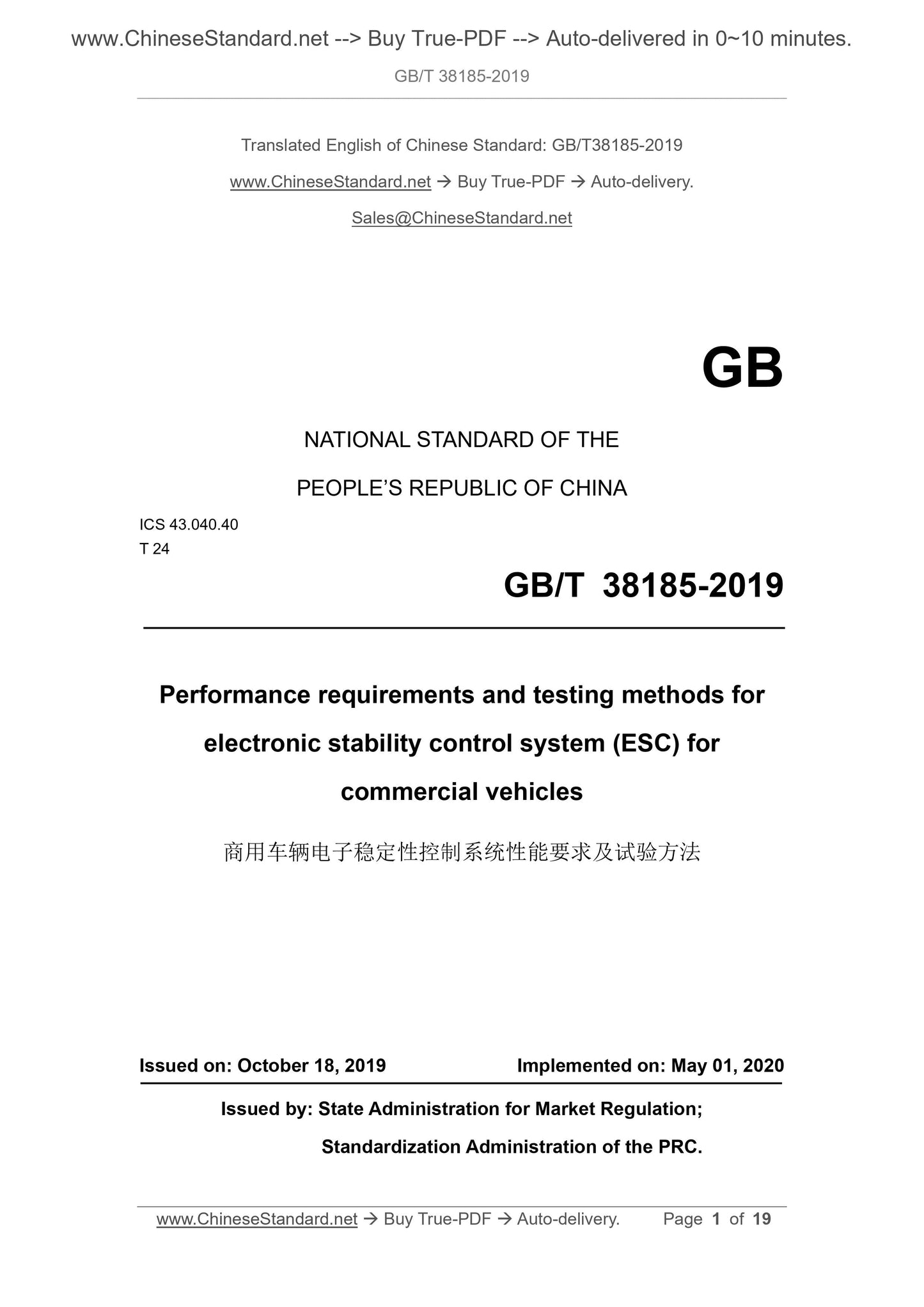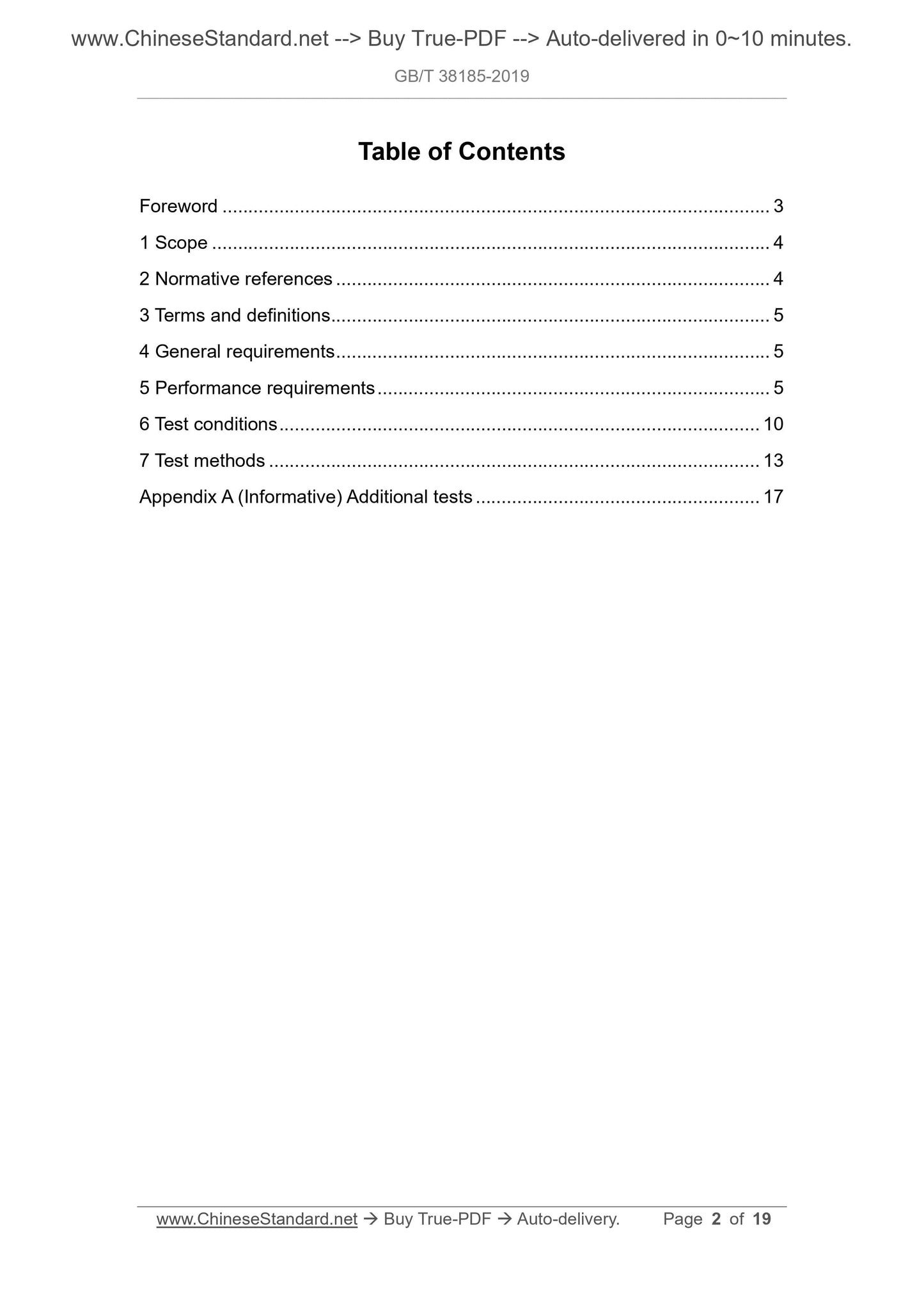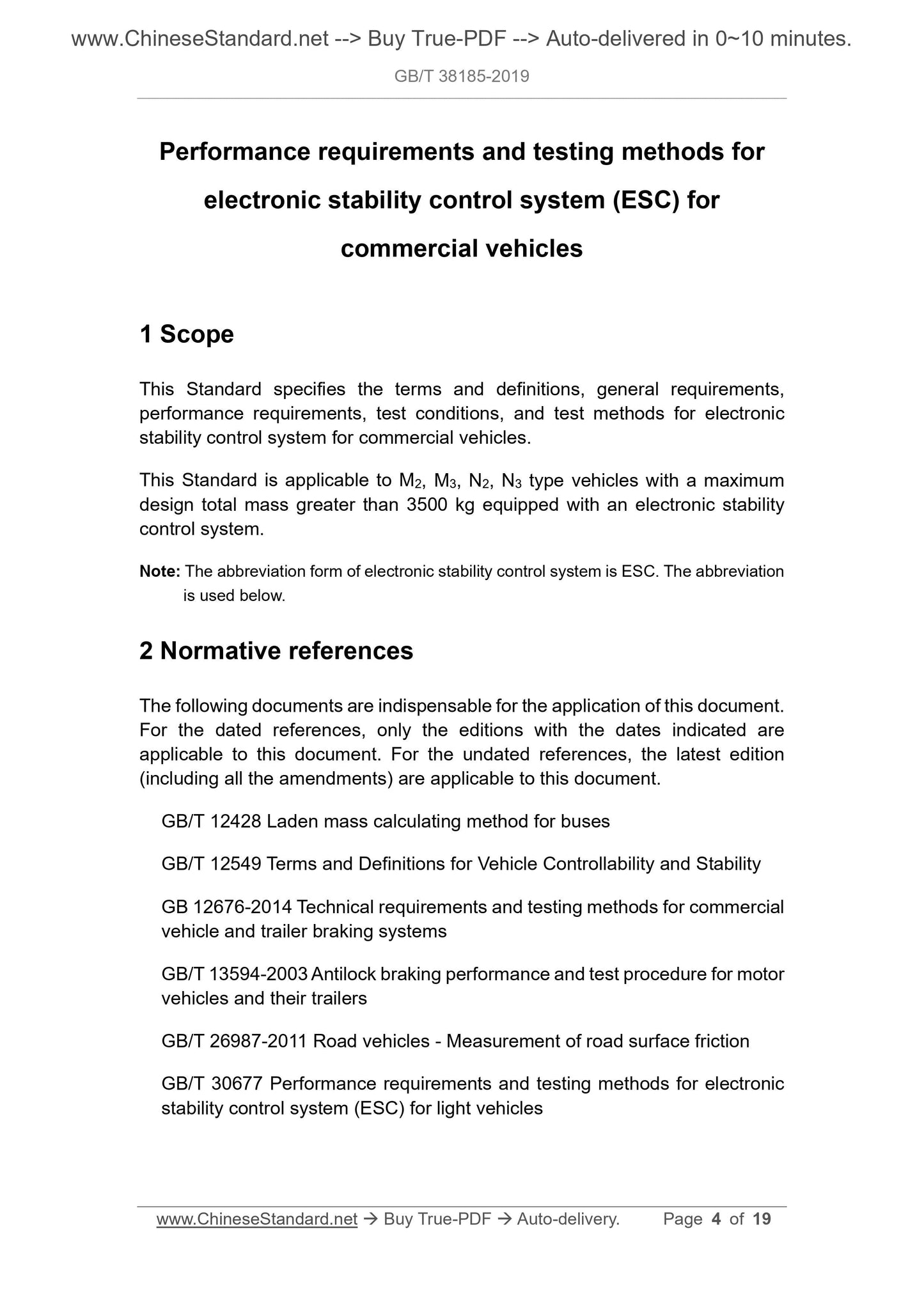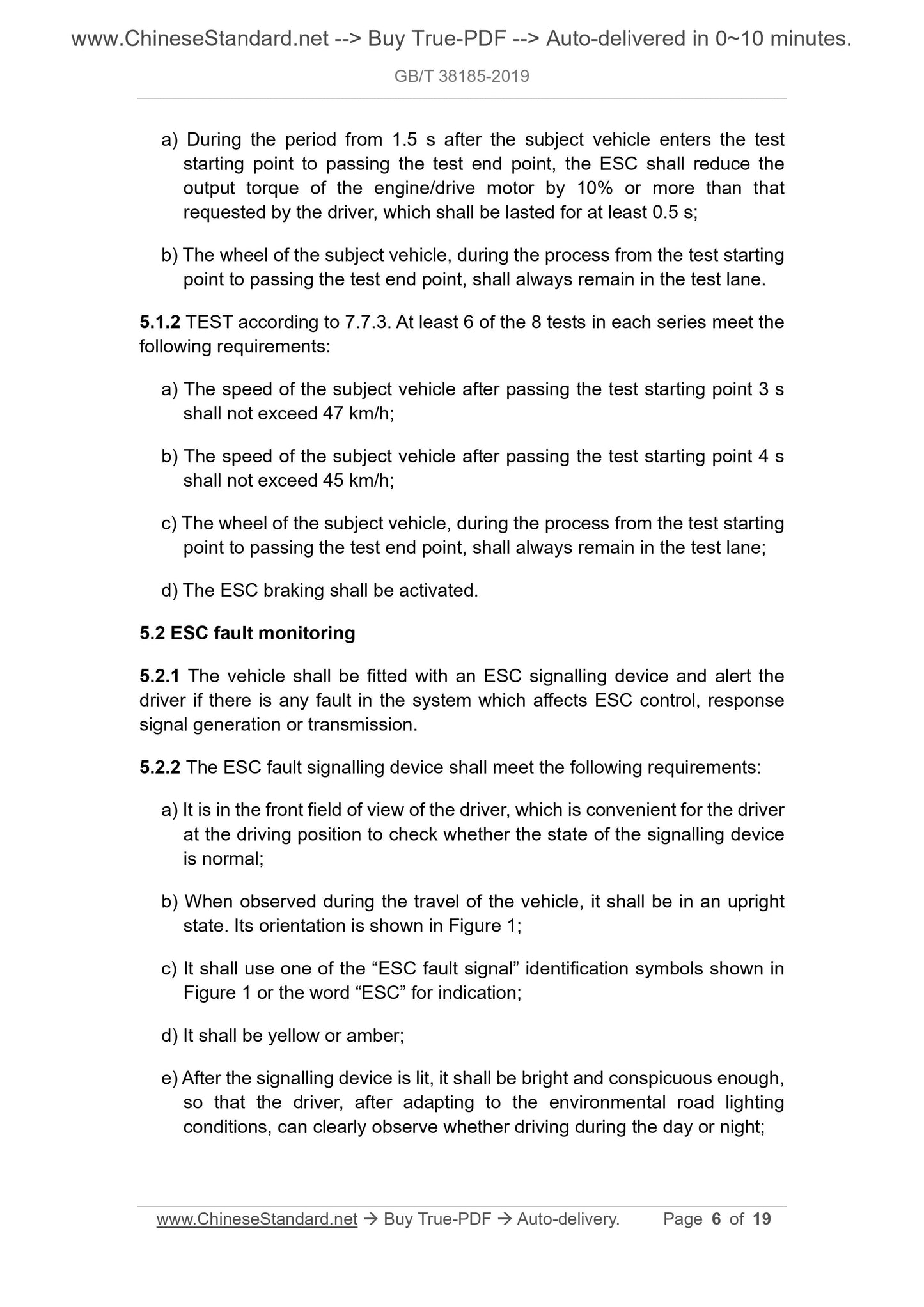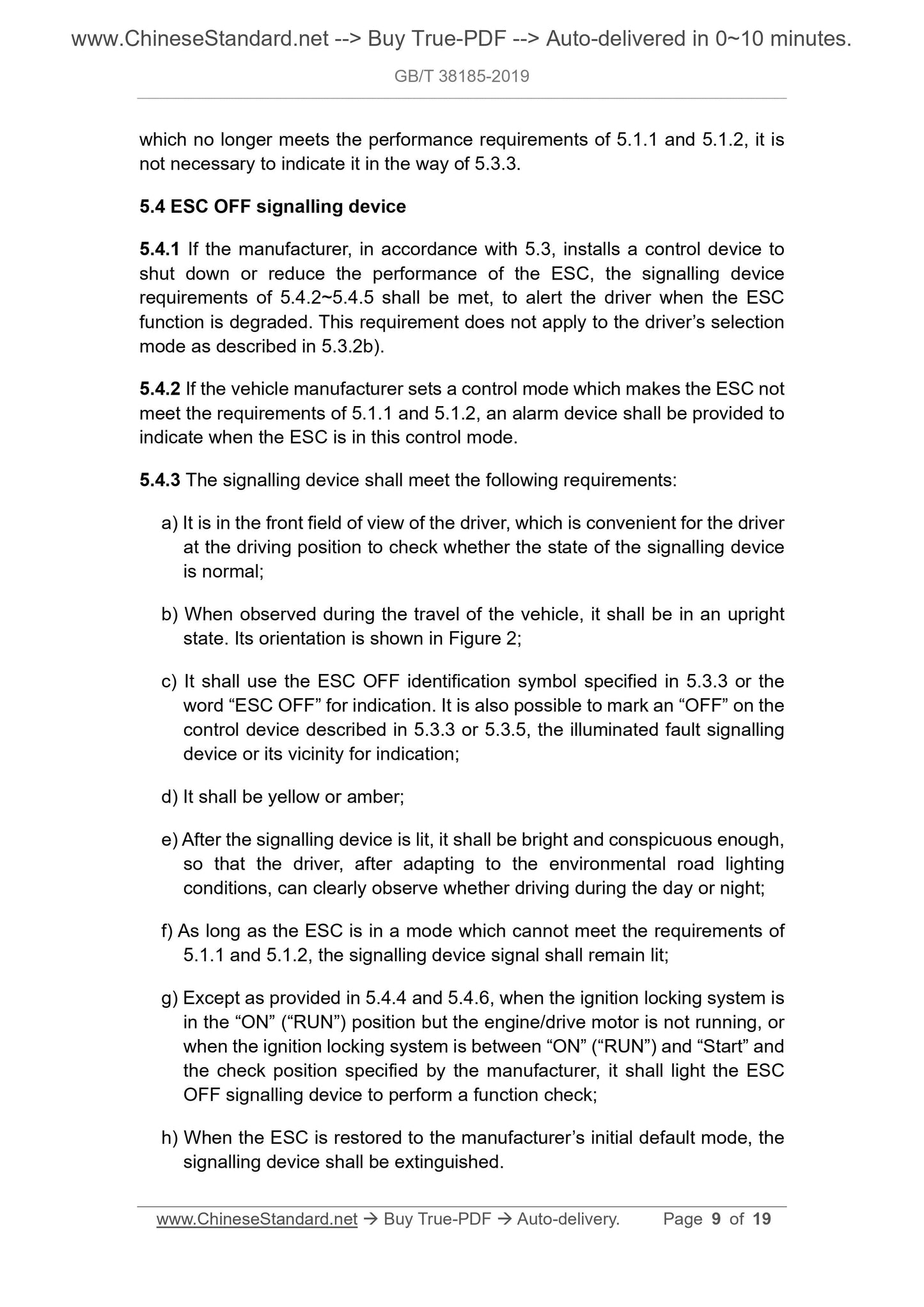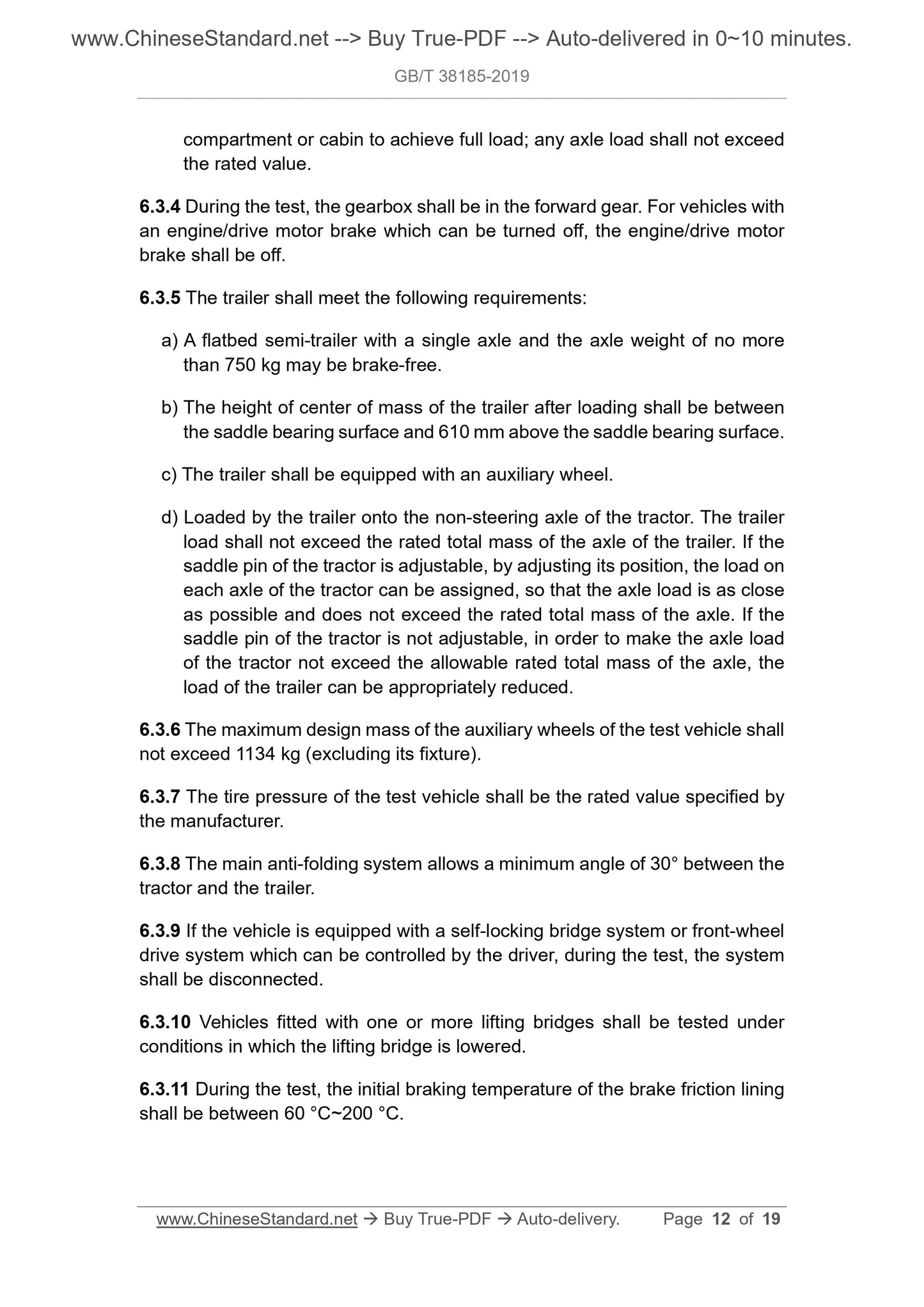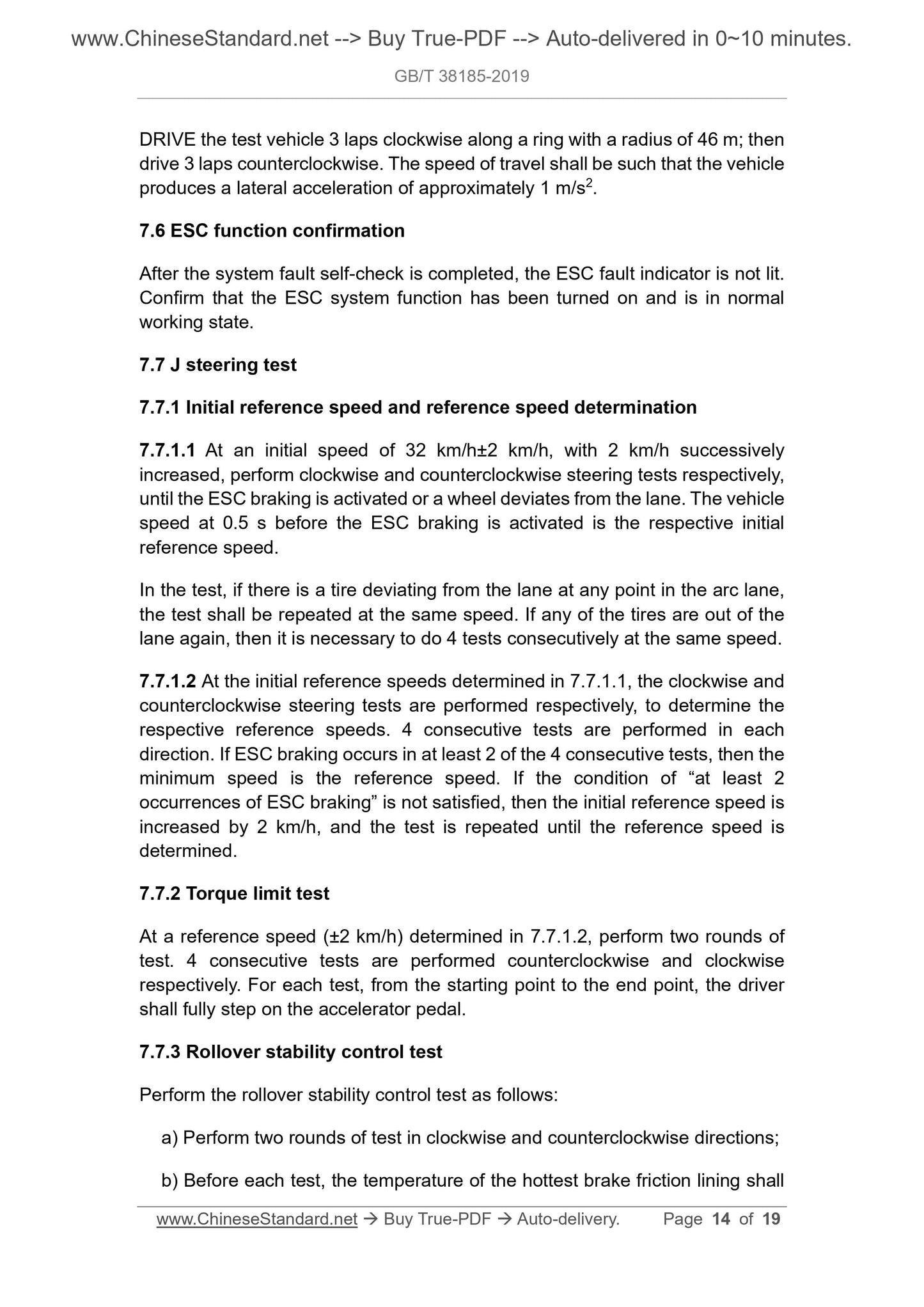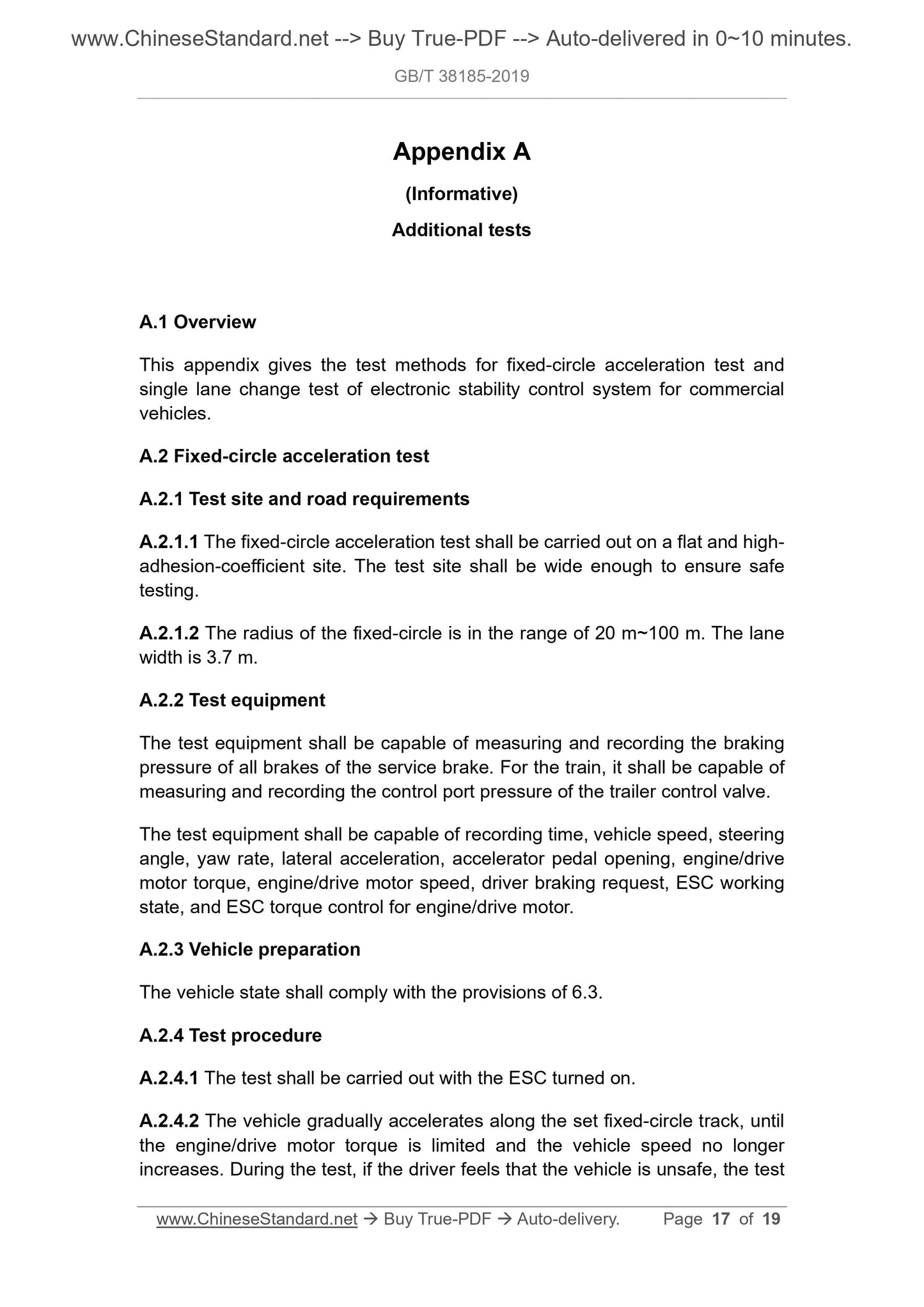1
/
of
8
www.ChineseStandard.us -- Field Test Asia Pte. Ltd.
GB/T 38185-2019 English PDF (GB/T38185-2019)
GB/T 38185-2019 English PDF (GB/T38185-2019)
Regular price
$135.00
Regular price
Sale price
$135.00
Unit price
/
per
Shipping calculated at checkout.
Couldn't load pickup availability
GB/T 38185-2019: Performance requirements and testing methods for electronic stability control system (ESC) for commercial vehicles
Delivery: 9 seconds. Download (and Email) true-PDF + Invoice.Get Quotation: Click GB/T 38185-2019 (Self-service in 1-minute)
Newer / historical versions: GB/T 38185-2019
Preview True-PDF
Scope
This Standard specifies the terms and definitions, general requirements,performance requirements, test conditions, and test methods for electronic
stability control system for commercial vehicles.
This Standard is applicable to M2, M3, N2, N3 type vehicles with a maximum
design total mass greater than 3500 kg equipped with an electronic stability
control system.
Note: The abbreviation form of electronic stability control system is ESC. The abbreviation
is used below.
Basic Data
| Standard ID | GB/T 38185-2019 (GB/T38185-2019) |
| Description (Translated English) | Performance requirements and testing methods for electronic stability control system (ESC) for commercial vehicles |
| Sector / Industry | National Standard (Recommended) |
| Classification of Chinese Standard | T24 |
| Classification of International Standard | 43.040.40 |
| Word Count Estimation | 14,158 |
| Date of Issue | 2019-10-18 |
| Date of Implementation | 2020-05-01 |
| Issuing agency(ies) | State Administration for Market Regulation, China National Standardization Administration |
Share
